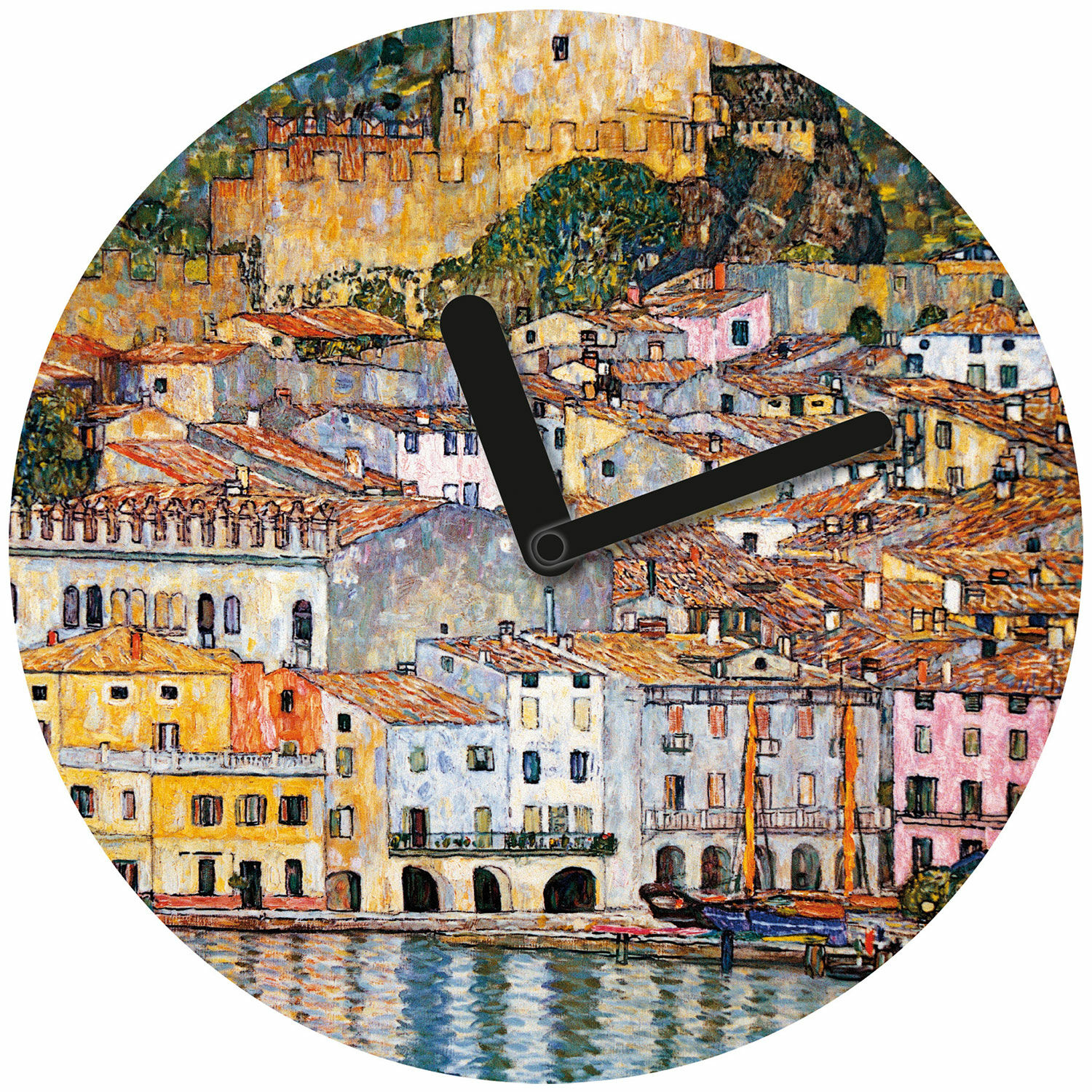Wall clock "Malcesine on Lake Garda"
Wall clock "Malcesine on Lake Garda"
Quick info
ars mundi Exclusive Edition | aluminium | quartz movement | Ø 28 cm
Detailed description
Wall clock "Malcesine on Lake Garda"
Klimt's work of art reinterpreted as a wall clock.
Wall clock made of aluminium with quartz movement (shipped without battery). Diameter 28 cm. ars mundi Exclusive Edition.

About Gustav Klimt
1862-1918, Austrian painter, a famous representative of Viennese Art Nouveau
Gustav Klimt (1862-1918) was already a renowned artist, influencing the Art Nouveau style of Vienna's famous Ringstrasse with his murals and co-founding the Vienna Secession, when he created his "Golden Style". Inspired by the Byzantine mosaics, he inserted ornamental colour surfaces into a golden bed just like encased gemstones. With his visual art, Klimt describes the path of life of human beings who, negatively influenced by instincts, find their redemption in the kiss. The depictions of the body convey a subtle eroticism, although their figures dissolve into ornamental and geometric colour surfaces. He utilized this method not only for his depictions of couples but also for his portraits of rich women and landscape paintings. This two-dimensional style is today the epitome of Klimt's intensely coloured art, which, however, only characterises his work from 1905 onwards.
Klimt was not only adept at gold and opulence but was also a brilliant draughtsman. He produced numerous drawings in the course of his life. Mostly as preliminary studies for larger works.
As a son of an engraver, Klimt learned his craft at Vienna‘s School of Applied Arts. While still seeking to find his own artistic style, his early work is based on historicism especially influenced by Hans Makart, the artist Prince of the Habsburg monarchy in the late 19th century. Together with his brother Ernst and Franz Matsch, the three young painters formed an artistic community and received numerous commissions to design new buildings on Vienna's Ringstrasse. The staircases of Vienna's Burgtheater or the Museum of Fine Arts bear witness to the historicist style of this collaborative team.
In the late 1890s, like so many young and open-minded artists of the fin de siècle, Gustav Klimt abandoned the academic tradition. In 1897, together with other artists, he founded the "Wiener Secession", which he presided over as president until his resignation in 1905. To this day, the Secession's exhibition building remains a place and temple for new young art.
Graphic or sculpture edition that was initiated by ars mundi and is available only at ars mundi or at distribution partners licensed by ars mundi.
Art Nouveau, or the German term Jugendstil (lit.: "Youth Style"), is the art epoch between 1890-1910. The name originates from the Munich-based magazine "Jugend" (Youth), founded in 1896. It was the German counterpart of Art Nouveau (France), but also internationally known as Modern Style (England) or Secession (Austria).
Art Nouveau conquered all of Europe and innumerable works were created, ranging from painting and applied arts to architecture. One of the requirements of Art Nouveau was the artistic design of everyday objects, i.e. beauty and practicality were combined. The desired unity of the artistic ability could only be achieved through individually influenced design, which made the Jugenstil the precursor of modernism. The essential characteristic of Art Nouveau is linear, often asymmetrical ornamentation. The models are particularly taken from nature and flora.
Major Art Nouveau centres were formed in Munich, Darmstadt, Brussels, Paris and Nancy (Glass Art by Emile Gallé). The Viennese architecture of that time was determined by Otto Wagner and J. Hoffmann. Gustav Klimt created paintings that gave sensual shape to the spirit of Art Nouveau.


